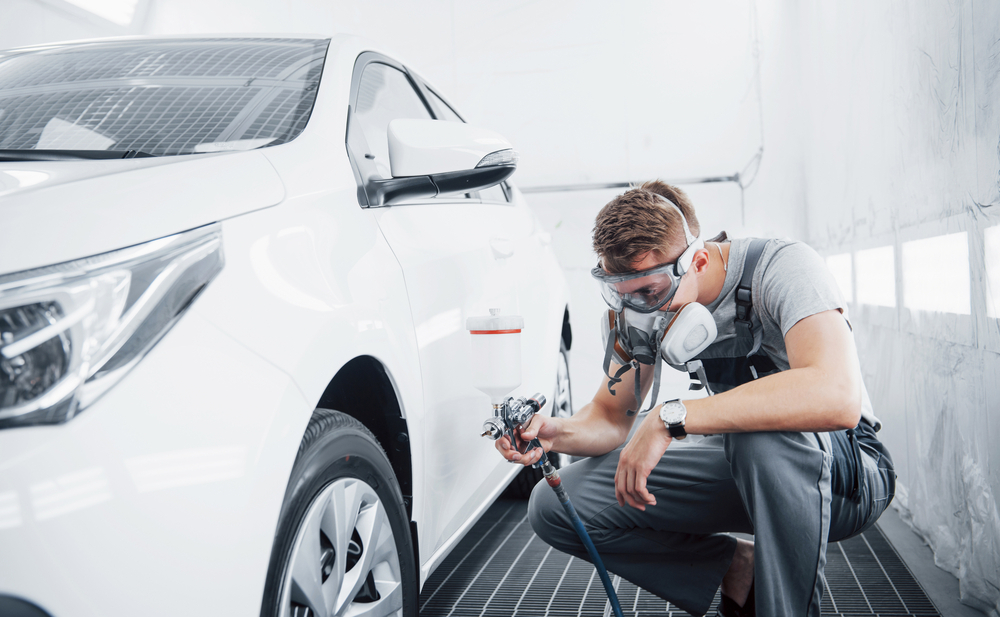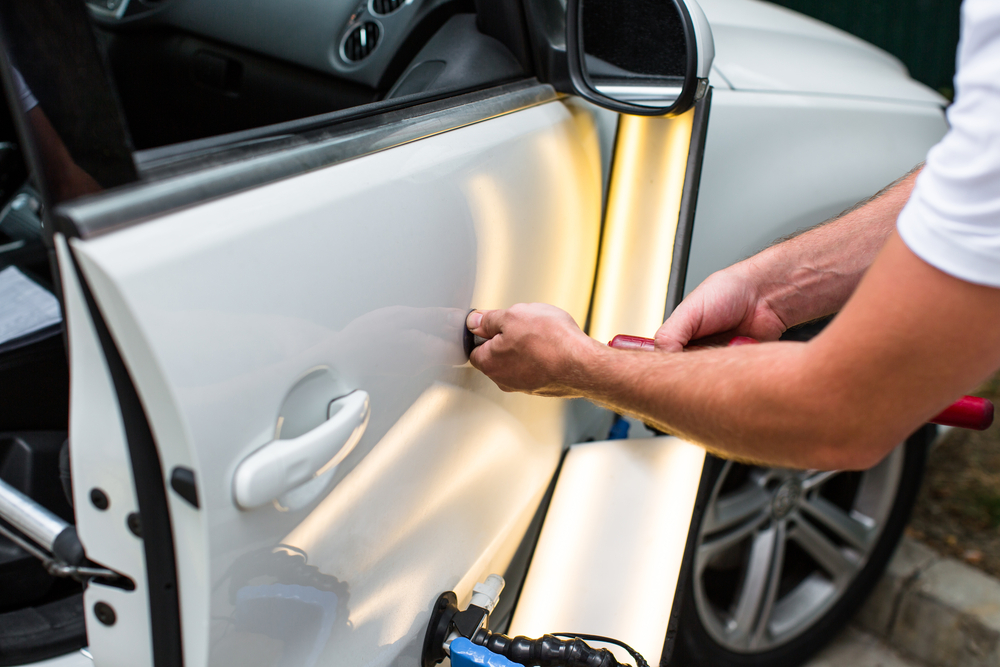When it comes to your car, its paint is more than just an aesthetic feature—it protects the vehicle’s body, maintains its value, and even reflects your personality. For drivers in Sewell, NJ, choosing the right auto paint requires considering factors like weather, local road conditions, and even your vehicle’s intended use. Here’s a detailed guide to help you make the best decision for your car.
Key Takeaways
- Choose from acrylic, enamel, urethane, metallic, or matte finishes based on durability, appearance, and maintenance needs.
- Consider resale value, visibility, climate, and personal style when picking a car color.
- Seamless paint matching preserves your car’s value and appearance—professional tools ensure accuracy.
- Wash regularly, use protective coatings, park in shaded areas, and fix chips promptly to protect your paint.
Understanding Auto Paint Options
Auto paint comes in various types, each with its unique qualities. Understanding your options is the first step in choosing the right paint:
- Acrylic Paints: These are affordable and easy to apply, making them a popular choice for older vehicles. However, they are less durable than other options and may require regular maintenance.
- Enamel Paints: Known for their durability, enamel paints create a hard, glossy finish. They’re ideal for drivers seeking long-lasting protection, especially against the road salt used during Sewell’s snowy winters.
- Urethane Paints: Urethane paints are highly durable and resistant to UV rays, scratches, and chemicals. They’re a premium choice for newer vehicles or those frequently exposed to harsh weather.
- Metallic Paints: If you want a sleek, modern look, metallic paints add depth and shine to your car’s appearance. They’re also great at hiding minor scratches.
- Matte Finishes: Popular among luxury car owners, matte finishes provide a sophisticated, non-reflective look. However, they require more careful maintenance to avoid damage.
Choosing The Right Auto Paint for Your Car in NJ
The color of your car’s paint affects more than just its appearance—it influences safety, practicality, and even resale value. When selecting the right color for your vehicle in Sewell, NJ, consider the following factors:
Resale Value
Neutral colors like white, black, gray, and silver remain the most popular choices for car buyers, as they appeal to a broader audience. Choosing one of these colors could help your car retain its value and sell faster when the time comes. On the other hand, bold or unique colors may be harder to sell but could appeal to niche buyers.
Visibility
Bright colors such as red, yellow, and orange not only make a bold statement but also improve visibility on the road. These colors are easier for other drivers to spot, particularly in low-light or inclement weather conditions. In Sewell, where busy streets and unpredictable weather are common, added visibility can be a safety advantage.
Climate Considerations
Think about how your car’s color interacts with the local climate. Light colors like white or silver reflect sunlight, keeping your car cooler during Sewell’s hot summers. Conversely, darker colors like black, navy, or dark green absorb heat, which might make your vehicle’s interior warmer on sunny days.
Personal Style
Ultimately, your car’s color is an expression of your personality and style. Whether you prefer sleek, neutral tones for a sophisticated look or bold, vibrant hues for a standout appearance, choose a color that makes you feel confident and proud every time you’re behind the wheel. After all, your car should reflect your individuality.
What About Paint Matching After an Accident?
When your car is damaged, whether from a minor scratch or a more serious collision, restoring its appearance requires more than just applying new paint. Achieving a seamless color match is critical to preserving your car’s value, maintaining its aesthetic appeal, and avoiding mismatched repairs that stand out.
Modern vehicles often use factory-specific paint colors formulated with unique blends of pigments, metallic flakes, and finishes. These colors can be difficult to replicate precisely without advanced tools and knowledge. Factors like sun exposure, wear, and weather conditions can also subtly alter your car’s original paint over time, making it even more challenging to match the color by eye.
At Elmer’s Auto Body, we go beyond standard repairs with state-of-the-art color-matching technology. Our process includes:
- Digital Color Matching: We use advanced tools to scan your car’s existing paint and identify its precise shade, tone, and finish. This ensures an exact match, even for unique or aged factory colors.
- Custom Paint Formulation: Once the color is analyzed, we create a custom paint mix that matches your car’s original color perfectly. This blend accounts for any changes to the paint due to weathering or fading.
- Professional Application: Our skilled technicians use precision techniques to apply the paint evenly, ensuring the repaired area blends seamlessly with the rest of your vehicle.
Maintenance Tips to Extend Your Paint’s Lifespan
Once you’ve chosen the perfect paint, proper maintenance is key to preserving it:
- Wash Regularly: Clean your car to remove dirt, road salt, and grime that can damage the paint.
- Use Protective Coatings: Apply wax or ceramic coatings to add an extra layer of protection against the elements.
- Park Wisely: Whenever possible, park in shaded or covered areas to avoid prolonged sun exposure.
- Address Chips Quickly: Small chips or scratches should be repaired promptly to prevent rust from forming.
Contact a Sewell Auto Body Repair Shop Today
Choosing the right auto paint is an investment in your car’s value, appearance, and longevity. Whether you’re considering a complete color change, refreshing an older vehicle, or repairing damage after an accident, trust Elmer’s Auto Body in Sewell, NJ. Our skilled technicians can help you select and apply the perfect paint to make your car look like new. Call one of our three South Jersey locations or fill out the online form to schedule an appointment today.






